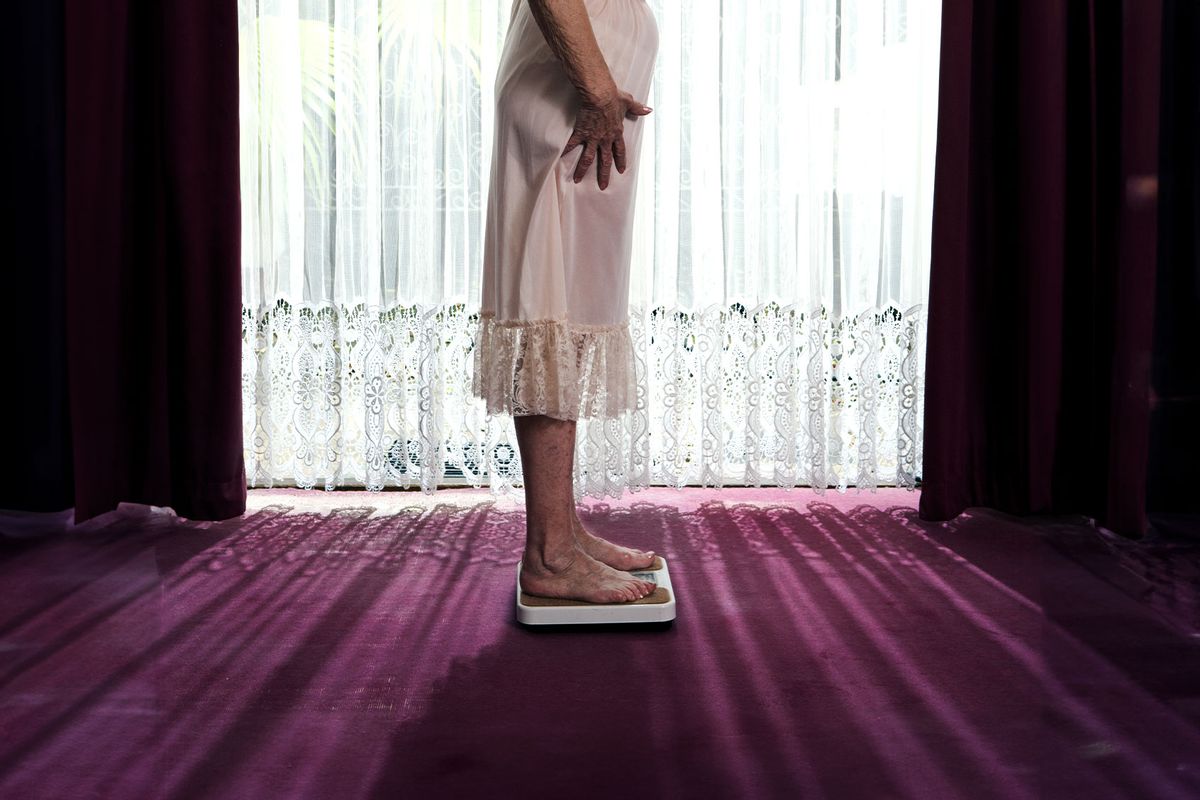Adult eating disorders are on the rise, and they’re harder to diagnose and treat

I hadn’t seen my friend in a long time, and when we met up for brunch I thought she looked great. The years had seemed to have had no effect on her; she was the same chic, athletic woman she’d been back when we’d lived a few blocks apart. But when I ordered my meal, she said she wasn’t hungry and ordered a black tea. And then she told me she’d recently been diagnosed with anorexia.
For many of us, the default image of someone with an eating disorder is a waif thin adolescent white girl, or maybe a gaunt matron, the kind of woman Tom Wolfe once dubbed a “social X-ray.” Yet I assumed I knew better. My own mother struggled with eating disorders her whole life, and I’ve watched friends of all shapes, sizes and genders go in and out of their own sometimes catastrophic relationships with food. Why then had I been so blindsided that Sunday at brunch? Why hadn’t I recognized how invisible eating disorders can be, especially in people we don’t expect to have them?
While eating disorders, which can encompass — anorexia, bulimia, binge eating and other conditions and behaviors — typically manifest in adolescence and mostly in females (roughly 90%), they can strike anyone at any time, across a swath of populations. The Center for Women’s Health at Oregon Health & Science University reports that “Eating disorders are now on the rise worldwide. Between 2000 and 2018, prevalence more than doubled (3.4% to 7.8% of all people).” And when they show up in older people, the causes can be different, the symptoms can be harder to detect and the stigma around grappling with disorders often flippantly associated with privileged young girls can make them more challenging to treat.
“Adults might not display the ‘classic’ symptoms we associate with these disorders, such as extreme weight loss,” explains Dr. Judith Zackson, the founder and clinical director of Greenwich Psychology. The National Eating Disorders Foundation notes that fewer than 6% of people with eating disorders are underweight. “Instead,” she says, “they might exhibit more subtle signs like restrictions in eating habits, excessive concern over body image despite a healthy weight, or over-exercising.”
Even when an adult does undergo a weight change in either direction, it may go unrecognized or remarked on because, as Dr. Kevin Huffman, a primary care physician and Medical Director of Florida Injury Centers says, “They could merely mirror natural fluctuations associated with aging.” He adds, “Adding to this complexity is the patients’ tendency — being mature — to develop refined methods of camouflage over time.” An older person with an eating disorder is also unlikely to be as well observed as a young person, whose parents and teachers will be more attuned to their habits. Whether we live on our own or with others, most of us don’t share all our meals with the same people every day. And even if we do, who’s going to say something if a fellow grown-up’s habits seem unusual or restrictive — especially when unusual and restrictive eating is so validated and encouraged?
“The behavior is largely celebrated by modern culture — and often by the person’s doctors and health care providers.”
“The most under-diagnosed ED (eating disorder) in adulthood is orthorexia, which presents as a rigid set of rules around eating ‘clean,'” says Lauren Napolitano, a psychologist in Philadelphia specializing in eating disorders. “This disorder starts as a person doing a ‘Whole 30’ or ‘Dry January’ and then slowly morphs into eliminating many different food groups (gluten, carbs, processed food, alcohol, etc.) In the beginning people are impressed with the person’s commitment to their health, but over time the rules become increasingly rigid such that this person dreads eating with other people or dining in a restaurant. Their anxiety about ingesting ‘non-clean’ food rules their life. If you look at TikTok and Instagram, there are tons of social media influencers who are unwittingly endorsing orthorexia by posting ‘What I eat in a day’ videos where the foods eaten are only fruits and vegetables.” And she observes, “Orthorexia is hard to treat in mid-life in part because the behavior is largely celebrated by modern culture — and often by the person’s doctors and health care providers.”
Katherine Metzelaar, a dietitian and certified intuitive eating counselor and founder of Bravespace Nutrition, says she’s observed a similar phenomenon in her practice. “Most adults cannot recognize when they have an ED because so many of the behaviors are normalized in our dieting and wellness culture,” she says. “Many adults I work with don’t think they have an ED coming in, and realize after some time that actually, they meet criteria for an ED.” That’s why, she says, “It’s essential to consider the life stage someone is in and how long they’ve been in the ED because that is all important in the recovery process. Many people that I work with have been stuck in disordered eating or the ED for their whole life.”
In a culture where skipping meals and powering through the work and parenting day are seen as a badge of honor, it’s not a red flag for someone to go without eating. I certainly didn’t bat an eye when my friend didn’t order any food at a get together we’d specifically arranged at a restaurant. You know why? Because I can’t count the number of times I’ve gone out with friends and they didn’t consume a bite.
“Many people that I work with have been stuck in disordered eating for their whole life.”
If eating disorders in older people look different than they do in adolescents, their causes are often distinct as well. They often start with three central triggers, explains Mary Anne Cohen, a psychotherapist and Director of the New York Center for Eating Disorders. “A person develops an eating disorder as a teenager, never resolves it, and it persists through various stages of life. A person develops an eating disorder as a teenager, succeeds in resolving it, but relapses when triggered as a middle aged person. Or, a person begins suffering from an eating disorder or body image dissatisfaction for the first time as an adult. The disorder flares up during periods of exceptional stress, such as any major change that shakes the foundation of how a person defines themself. Transitions, ruptures, and grief create the perfect storm for eating disorders to take root.”
Cohen cites a number of adult and midlife touchpoints: “Struggles around loss and grief, transitions and fear, uncertainty and the anxious need to be in control. Concerns around an empty nest, retirement, caregiving or death of older parents, possible divorce, menopause and the illness of one’s self or loved ones can get detoured toward eating disorders and body preoccupation.” And in moments of stress and change, she says, “Older people often crystallize their emotional pain into one concrete problem — ‘I hate my aging body. I need to change it, and change it, and change it some more.'”
Even though my friend couldn’t eat with me that recent Sunday we spent together, I’m heartened that she did feel comfortable talking plainly and honestly about her situation, and I’m hopeful for what lies ahead for her. An eating disorder is a brave thing to own up to at our age. “Unlike adolescents, adults might have decades of underlying issues compounded by life stressors like career pressure or familial responsibilities,” says Dr. Judith Zackson, adding, “There’s a critical need for greater awareness and understanding. The stigma and shame associated with these disorders in adults can be a significant barrier to seeking help. Support for someone with an eating disorder involves patience, empathy, and understanding.” And, she says encouragingly, “Recovery is a journey, and with the right support, it is attainable.”
Read more
about eating disorders


